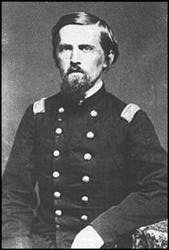|
[Index] Carlin, Nevada - June 1869 In December 1868, Central Pacific Railroad construction workers laid
rails into a northeast Nevada meadow next to the Humboldt River. CPRR officials
selected the place as the eastern end of the Humboldt Division and named
the town, Carlin.
A dance was planned to celebrate. The upper crust of the community turned out in their finest and most fashionable clothes. It was a grand party. Then the fertilizer hit the fan. Someone saw that the red-light district ladies were there. That was a no, no. One of the merchants took it upon himself to inform the girls that they and their companions had not been invited and would have to leave. The ladies of the night and their men friends left in a huff. The dance continued - it was a success! But the incident did not die that evening. The next day, the merchant was lured into an empty building and was unmercifully beaten by friends of the prostitutes. Then, the attackers had the audacity to tack up notices around town for the businessman to leave town or be shot. Thatís pretty blatant, so much so that the other people in Carlin were furious. An angry vigilante committee was formed and their actions were thorough - they pounded on doors and smashed windows. The vigilantes rounded up all the hurdy gurdy gals and those associated with them. A large wagon had been bought and the undesirables and their belongings were loaded, pointed in the direction of White Pine and sent on their way with a warning to never return. Carlin citizens had gotten rid of their dregs of society. Civilization had arrived in the little six months old town on the banks of Humboldt. Sources: Pioneer Nevada, Volume Two, published by Harolds Club, Reno, 1956; and Nevadaís Northeast Frontier, Edna Patterson, Louise Ulph Beebe, and Victor Goodwin, 1969. ©Copyright 2004 by Howard Hickson. |

